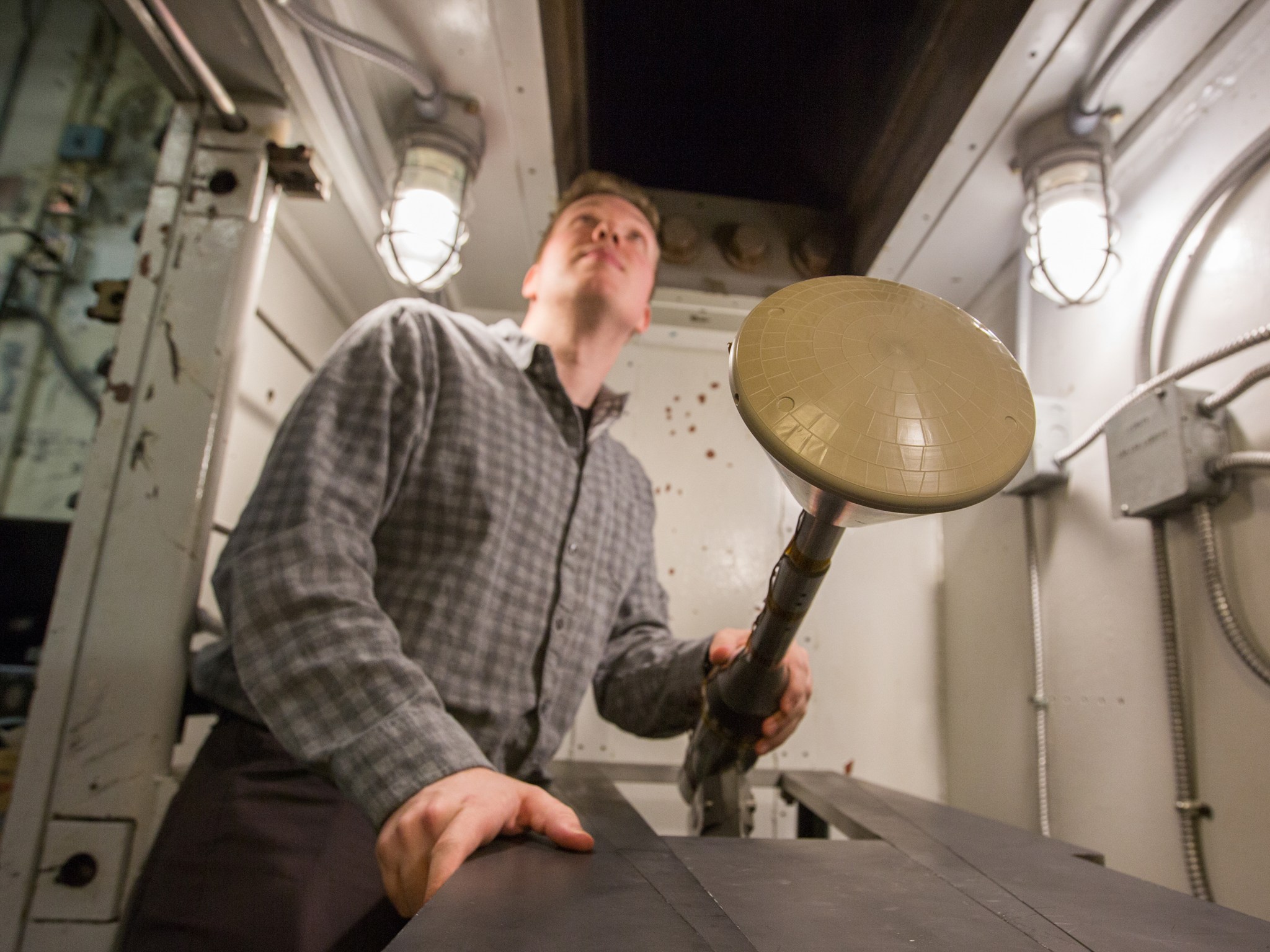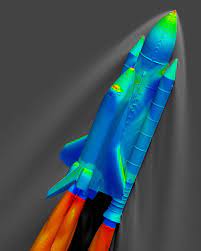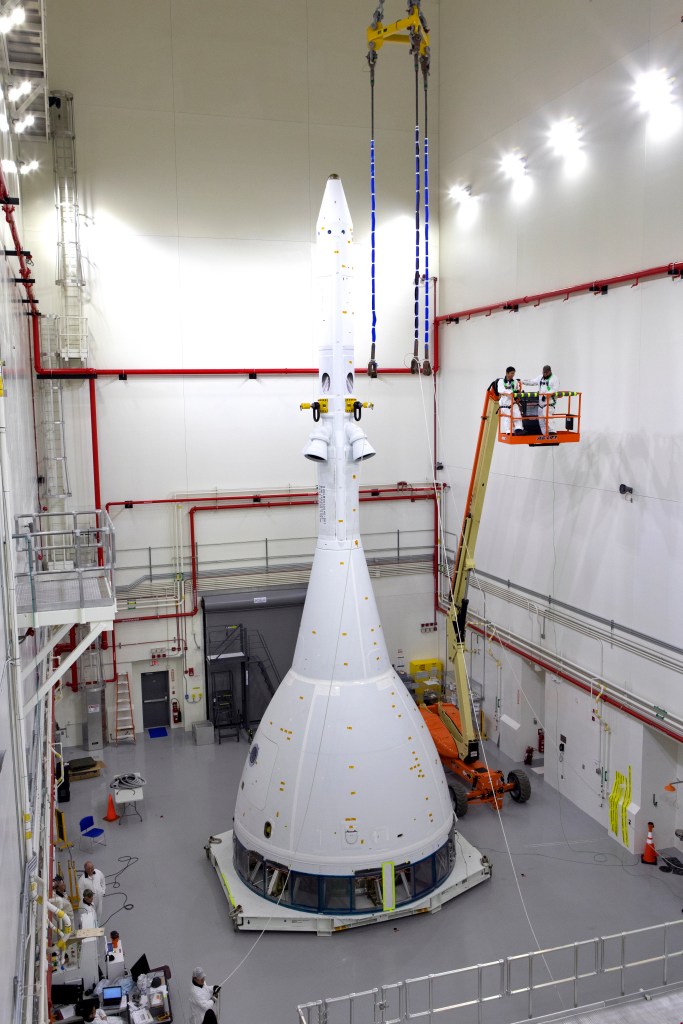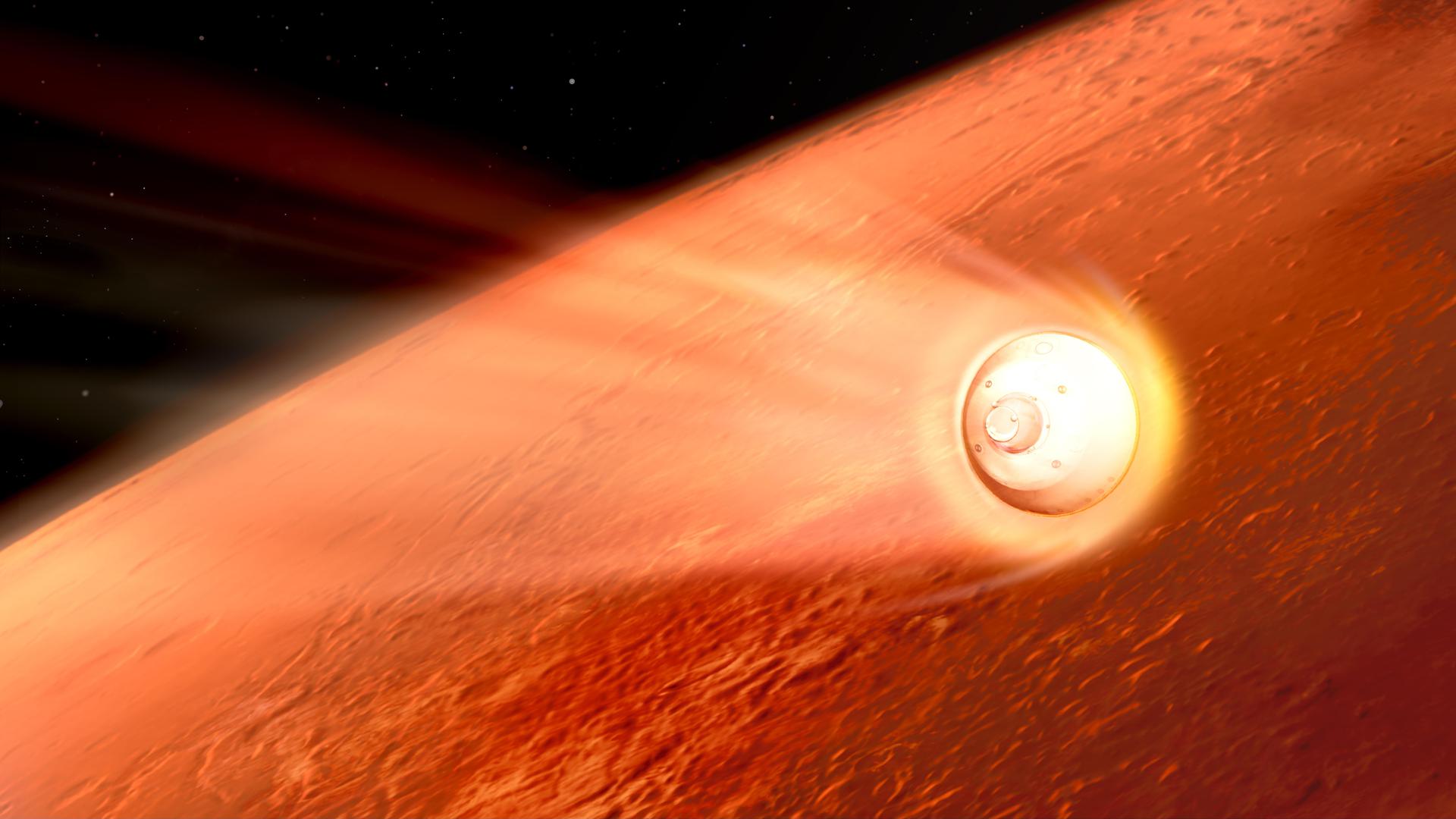Aerosciences
In support of JSC’s human spaceflight mission, the Center provides cutting-edge expertise and advanced simulation tools to characterize aeroscience environments, including aerodynamic characterization, aerothermodynamic heating, rarefied gas dynamics, and decelerator (parachute) systems. JSC’s high performance computing environment serves customers from the JSC Engineering Directorate, external NASA centers, and commercial and academic entities. The lab is equipped with specialized tools such as the Direct Simulation Monte Carlo (DSMC) Analysis Code (DAC) for simulating and analyzing low-density flowfields, plume impingement effects during proximity operations, Genesis for multi-body flight mechanics simulation, and expertise in spacecraft aerodynamics, aerothermodynamics, hypersonics, and rarified gas dynamics. Using a combination of analysis, ground tests, and flight tests, NASA JSC can provide comprehensive aerodynamic induced environment data and aerothermal environment data to characterize a spacecraft’s performance during all atmospheric flight phases, including hypersonic reentry. Additionally, the Charring Ablator Response (CHAR) supports vehicle design, ground testing, and flight data analysis for thermal protection systems, serving both defense and civil space industries. Explore our diverse capabilities below to advance your projects in space exploration.
Aerosciences Analysis & Testing
NASA JSC provides expertise in spacecraft aerodynamics, aerothermodynamics, hypersonics, and rarefied gas dynamics.
Using a combination of analysis, ground tests, and flight tests, NASA JSC can provide comprehensive aerodynamic induced environment data and aerothermal environment data to characterize a spacecraft’s performance during all atmospheric flight phases, including hypersonic reentry. Additionally, NASA JSC can provide state-of-the-art expertise, capabilities, and tools for analysis of a variety of low density, non-continuum flows (from transitional to free molecular) to model and analyze thruster plume environments and impingement.
Flight Sciences Lab (FSL)
The Flight Sciences Lab (FSL) is a unified computing environment that consolidates all three of the NASA JSC Aeroscience and Flight Mechanics Division’s former computer labs. Its users span the JSC Engineering Directorate as well as various external organizations including other NASA centers as well as commercial and academic entities.
- High Performance Computing
- High Performance Storage
- Engineering Workstation Administration
- Scientific Software Consulting
Direct Simulation Monte Carlo (DSMC) Analysis Code (DAC)
The Direct Simulation Monte Carlo (DSMC) Analysis Code (DAC) software is a specialized tool used for the simulation and analysis of low-density flow fields.
DAC is like a more familiar computational fluid dynamics tool, but the underlying Direct Simulation Monte Carlo method is uniquely suitable for simulating rarefied gas dynamics.
Genesis Flight Mechanics Simulation
Genesis Flight Mechanics Simulation and Trajectory Design Tool, “Genesis,” is a generic, multi-vehicle, variable-degree-of-freedom flight mechanics simulation. Genesis is capable of modeling ascent, aerocapture, entry, descent, and landing trajectories around a single planetary body. It is designed to be flexible and easily reconfigured for new vehicles. Genesis provides generic models for atmospheric properties, winds, aerodynamics, and propulsion. It can easily be extended with new environment, vehicle, or flight software models. Genesis can be used for a wide variety of analyses, ranging from optimizing a single trajectory to running a large Monte Carlo analysis in a High-Performance Computing (HPC) environment. It is implemented in the Julia programming language. Genesis is available through the NASA Software Catalog: https://software.nasa.gov/software/MSC-27061-1.
Engineering Model for Plume Impingement in Rarefied Environments (EMPIRE)
Engineering Models for Plume Impingement in Rarefied Environments (EMPIRE) software is a tool used to compute plume impingement heating effects from proximity operations of visiting vehicles to space stations.
EMPIRE provides an essential analysis capability associated with upper atmospheric flight for the prediction of vehicle aerodynamics and aerothermodynamics, as well as for the broad range of plume impingement environments during rendezvous and docking impacting ISS, Orion, HLS, and all other Gateway components. EMPIRE computes 3D distributions of plume load and mass flux, impingement heating and surface temperature on complex surface geometries from multiple plume sources.
Charring Ablator Response (CHAR)
The CHarring Ablator Response (CHAR) code is a finite element material response solver, capable of modeling the thermal response through a material stack up as well as the decomposition of ablative Thermal Protection System (TPS) materials. The code has been used to support vehicle design, ground testing, and flight data analysis for Orion and the Commercial Crew Program (CCP). It is EAR99 licensed across industry, mostly supporting defense and civil space.
While CHAR has general material response analysis capabilities, it is most used to simulate both re-usable and ablative thermal protection systems (TPS). CHAR can run on serial and distributed memory parallel computer systems to solve 1-D, 2-D, and 3-D geometry problems. In addition to modeling the material response due to an applied environment on the outer boundary, it can also perform TPS sizing (iteratively increases the TPS thickness until constraint(s) are met) and has an inverse algorithm that reconstructs the environment when provided the in-depth temperature profile. Within NASA, it has been used to support Commercial Crew and Orion designs and post-flight data analyses. CHAR has 75+ licenses across government, industry, and academia. This conference paper provides more detail:
https://arc.aiaa.org/doi/10.2514/6.2016-3385
Related Software
Genesis Flight Mechanics Simulation and Trajectory Design Tool v0.3.0
Mesh_Tools v1.2.0 – Automated Unstructured Grid Shock Fitting Scripts Mesh Extrusion for CFD
view2space – A tool for computing view factors to space for CFD grids


































